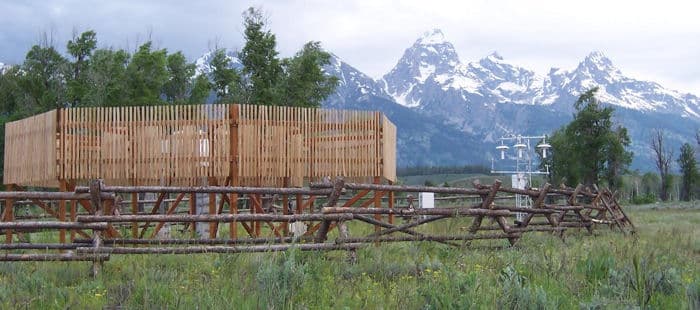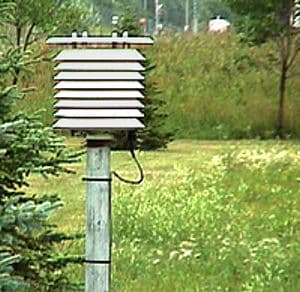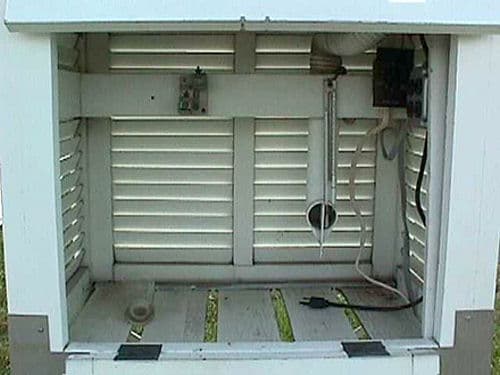The evolution of ambient temperature measurement technology has exposed several fundamental biases in the measurements taken to monitor changes in the climate. These biases must be quantified and compensated for to maintain the integrity of the historical temperature measurement record.
The US Climate Reference Network (CRN) is the most advanced network of ambient temperature measurement stations currently in use. The CRN stations were sited remotely to eliminate or minimize the potential impact of their surroundings on the representativeness of the ambient temperature measurements. Each station includes three high precision resistance temperature devices (RTDs) installed in fan aspirated radiation shield enclosures to assure constant air flow over the sensors, regardless of ambient wind conditions. The photo below shows a typical CRN location.

Measurements taken by the CRN stations were compared with measurements taken with the Maximum Minimum Temperature Systems (MMTS) collocated with the CRN stations. These tests demonstrated significant measurement biases with the MMTS, particularly under conditions of high solar radiation and minimum ambient wind speed. These biases are believed to result from the fact that the MMTS relies on natural convection to induce air flow over the sensors. The MMTS are also subject to additional bias as the reflectivity of the enclosure degrades due to weathering and ultraviolet degradation. The photo below shows a typical MMTS.

The MMTS came into common use for climate temperature measurement in the 1980s, replacing the Cotton Region Shelter (CRS) or Stevenson Screen with liquid-in-glass thermometers, which had been the measurement station of choice for most of the 20th century. The photo below shows a typical CRS.

The major disadvantages of the CRS include the requirement for a person to manually read the thermometers accurately at the proper time and the weather-driven deterioration of the reflectivity of the enclosure coating. The CRS produced biases are believed to result from its reliance on natural convection to induce air flow over the sensors and the heat storage capacity of the wooden box.
Measurements taken by CRN stations located relatively close to MMTS and CRS measurement stations are relied upon to verify the procedures used to correct for biases present in the MMTS and CRS stations. However, correcting known or suspected biased readings is less desirable than taking accurate readings in the first instance. This has recently resulted in calls for the development of a global land surface climate fiducial reference measurements network.
There has been a somewhat similar evolution in sea surface measurement approaches. Originally, sea surface temperature measurements were taken by lowering buckets of various construction from the decks of ships, allowing the buckets to fill with water, raising the buckets to the deck, immersing thermometers into the buckets to measure water temperature and then removing the thermometers from the water to read them and record the readings. This method was and is fraught with potential errors. More recently, many ships are equipped with temperature measuring devices located in the engine cooling water inlets. However, these readings are biased by the temperature conditions surrounding the cooling water inlets. Also, the water depth at which the samples are taken is a function of how heavily the ship is loaded, since the cooling water inlets must be located sufficiently below the Plimsoll line that they are beneath the water line when the ship is lightly loaded. Therefore, under normal operating conditions, the water temperature measured is not the surface temperature, but rather the temperature several feet below the surface, disturbed by the ship’s bow wake.
Deployment of drifting and moored buoys provides more accurate and reliable temperature measurement at the surface. These buoys have exposed the warm bias in the shipborne measurements. The more recent deployment of the Argo buoys has also facilitated measurement of sea temperatures at depth, providing valuable information regarding heat storage in the oceans.
The principal bias of the US CRN and the buoy-based measurements is accuracy. These stations are also used to check the accuracy of the satellite-based measurements, whose principal bias is comprehensive geographical coverage. These are highly desirable and valuable biases.


